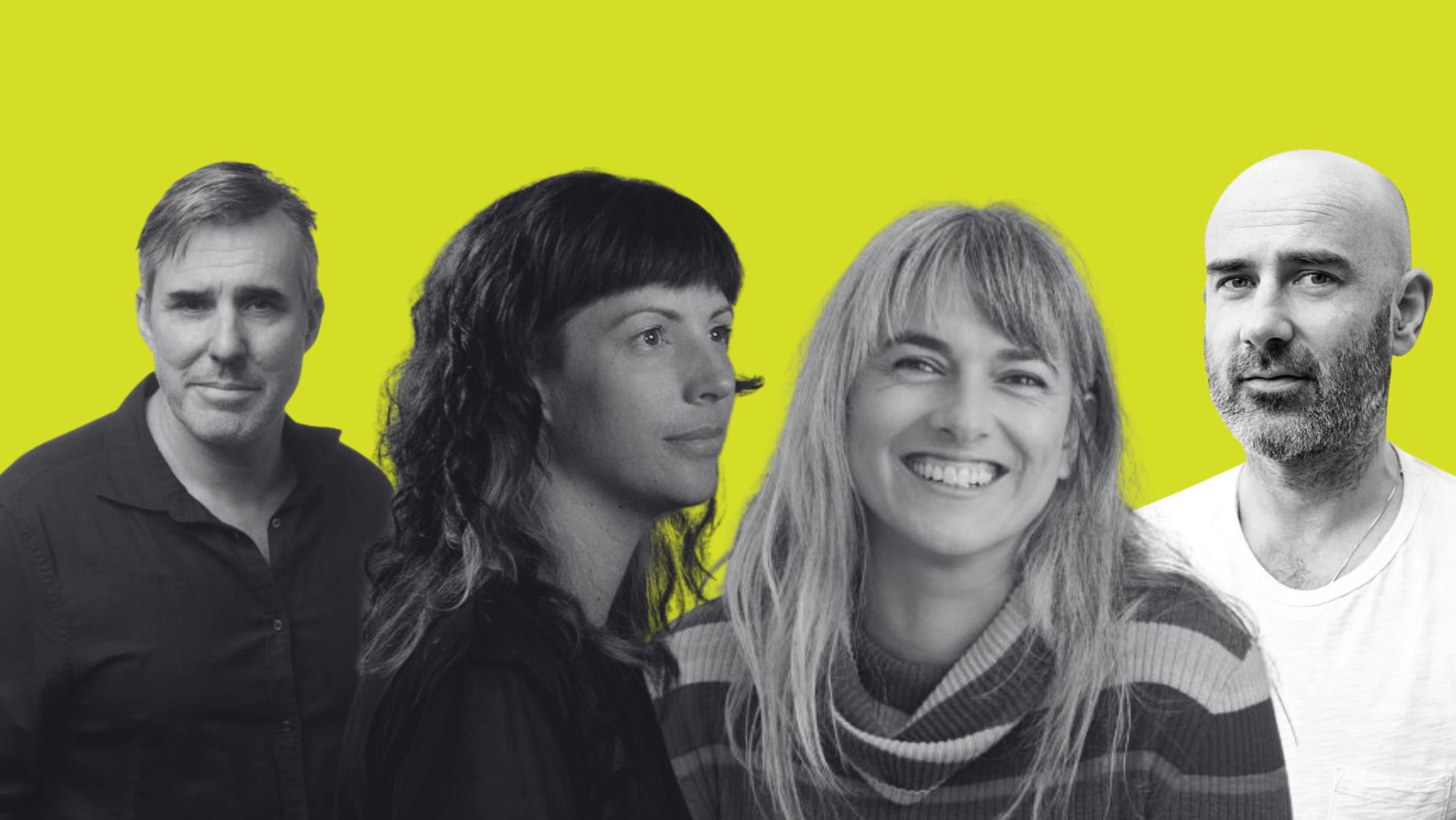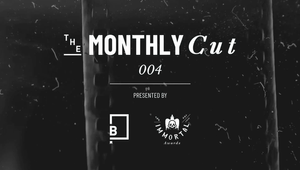
These Unsung Heroes Turn Ideas into Ads

Ads are made by a collection of people the industry rarely hears about, doing work only they can do. Since the array of production services can blur together -- casting, artists, animators, colourists, music and sound practitioners, possibly even ‘domino experts’ -- creatives don’t always visit the farm to see how the food is grown.
And by the time a campaign is launched and sucked into the press cycle, the rigour, skill, and expertise of technical jobs can be glossed over, or forgotten. One such role is that of a colourist, which is often, wrongly, lumped in with ‘post-production’.
Moodlab's head of colour, CJ Dobson, told LBB colour shouldn’t be an afterthought.
"A common misconception with colour grading is that we are post-production," she said.
“It can add a lot of value when colour is considered earlier in the process, particularly if there’s a strong look in mind.
“It's pretty common for me to get involved earlier with the director of photography, even in pre-production, to develop a look. I tend to look at the colourist as being within the cinematography department, working very closely with the cinematographer."
A colourist plays a crucial role in ensuring the colours in a film are accurate and visually consistent with the intended creative vision. Their work involves technical precision and creative adjustments.
Since colour perception can vary, based on lighting and display settings, the colourist relies on professional-grade equipment and an accurately set-up grading suite to maintain consistency.
One of their primary responsibilities is matching colours to real-world references, such as a product’s exact shade or a brand’s specific colour. This often requires comparing physical objects under neutral lighting to the digital image on a calibrated monitor.
For a product like Maxibon’s baked goods, colourists prefer to have the actual product on hand in the studio. This can be more difficult, though, for a product like a car, which CJ coloured for BYD -- but colourists will still spend as much time with the product as they can before moving to the suite.
The grading process itself is divided into two main stages: establishing the overall look, and fine-tuning details.
First, the colourist sets the "look and balance," which defines the general style (whether the footage should appear warm, cool, dark, or bright). Once this foundation is in place, they move on to detailed adjustments, such as isolating and enhancing specific elements using masks and tracking tools. This second stage is often the most time-consuming, especially when precise corrections are needed.
However, if the colourist is involved early in production, they can help avoid last-minute issues, including a client rejecting a creative look because it wasn’t previewed correctly in earlier edits.
“In TV and film, I work in pre-production more often … but in commercials, oftentimes we are involved at the end stage,” CJ added.
Then there’s Anton Trailer, a self-described digital nomad who has a varied background in production, handling jobs from camera operator to music PR. Now, as owner and director of Trailer Media, Anton specialises in music supervision.
“A big part of what [we do] is licensing music to brief,” Anton explained.
Music licensing is the legal process of obtaining permission to use a piece of music in a production or commercial. Depending on how the music will be used, there are various types of music licenses, including a ‘sync license’, a legal agreement that grants permission to use copyrighted music in combination with visual media, like films, TV shows, or video games.
‘Music sync’ itself refers to the process of matching a piece of music to a scene in a production, and involves selecting music for mood, pacing, or story.
A music supervisor is a professional who manages and oversees all aspects of music within a visual media project, such as a film, TV show, or video game. This involves finding the tracks themselves, negotiating the licensing agreement, and coordinating with legal teams and rights holders.
“So Many Different Moments” For Client Approval: Collaboration is Key
Beginning his career in professional photography, Andreas Wanda moved into animation and visual effects in 1999, and today is a VFX and animation supervisor at Atmos Studios. His skillset used to be seen as being in opposition to filmmakers, he explained, but now, directors and VFX experts view themselves as teammates.
“I learnt very quickly that directors and the crew love to capture as much as they can in- camera. There was a period when VFX was a threat to traditional filmmaking … [and] I felt almost alienated, like the enemy, on set. These days, there's much more mutual respect, and I like to work with the crew to get what we need because we're all part of the same team.”
VFX supervisors manage a project’s VFX pipeline, including all VFX artists working on a project. They have ultimate responsibility for all VFX elements, and work on a project from pre-production, liaising between the director and the studio, determining the VFX needed for every shot, and working with the artists to make prototype assets, including 3D-generated images.
“When I first started in the industry, the first thing I learned from one of my mentors was that you need solid foundations,” Andreas said.
“If you start with rocky foundations, you end up just fixing everything with band aids.
“For me, understanding how the camera works, how lighting works, and everything I've learned along the way, I can make a pretty good educated guess on how we should approach different projects.”
The resulting campaigns blend practical and computer-generated imagery seamlessly, like CommBank’s ‘Doubt Never Did’ -- an ambitious spot which required nimble on-set problem solving and highly detailed CG craftsmanship to bring the vision to life.
Andreas advises production teams which elements of a shoot should be captured on camera or executed later with GCI.
“There’s always a balance between time, quality, and budget,” he said.
“Whenever a project gets made, I can see those elements coming together when we first get the shots. I know what I'm going to layer on top of it. I know how I'm going to do it. I've got all the information and then I kind of see how all those layers are going to fit together – not making up anything in the last minute.”
Moodlab’s post-producer, Laura Hesse, echoed Andreas’ sentiment that finely-tuned instinct and collaboration is crucial. Working in sync saves time in the long-run for both clients and colourists.
"If clients are on-board with a look before the final grade, then we have more time in the grade for secondary adjustments, which helps streamline the process of client approvals.”
Using Tech to Evoke Emotion: “Make It Feel Real”
Before the widespread uptake of digital cameras, CJ recalled a time when colourists would receive and colour film rushes (the day’s raw, unedited footage).
“When we moved to digital, we lost that step because of budget and workflow reasons. I would like to change that, because there's a lot of benefit in having a look at footage before it goes into the ether.”
Talking colour shouldn’t mean talking jargon, but emotion, she argued. Some people still expect motion footage to match still photography, even though the two mediums have different limitations. Instead of discussing specific curves or editing settings, clients get better results by describing the desired mood or providing reference images, CJ explained.
Colour science also plays a big part in understanding what we’re looking at.
“We don't know when what we're looking at is off -- we get used to it. Our brain tells us it's natural how it should look. In actual fact, you could look at footage and see something so far from what it would have looked like on the day or on set because of colour science, the way the cameras are treating footage.”
But to someone on set, their brain insists the object in the frame is the same object they’ve been looking at the entire shoot.
“It's how we’re programmed,” she said. “So sometimes, people just don't know the possibilities of what the footage could be, so they don't know what to try.”
Andreas added there’s nothing worse than when a VFX artist tracks a character in a lens not matching the one used on the shoot.
“It doesn't happen so much now,” he said. “You could see it in the past when people were just trying to patch it together.”
Andreas “stay[s] on top of new technology all the time” to ensure he can apply the correct concoction of technology and experience to a project.
“I'm using AI and can generate images,” he said. “It's designed for people to really churn out worlds very quickly. There are often many ways to do the same thing, and whether one's faster than another doesn't really matter -- it's more about how quick artists are at doing it and what their preferred tool is.”
The most important thing for a young VFX artist to remember, Andreas says, is “make it feel real”.
“Too often do we see large objects or FX moving too quickly, and that ultimately takes away from the scale at which we want to perceive it.
“Observation is everything, from the way a tree falls over, to the way different kinds of light affect a scene or the micro-expressions in people's performances. I spend most of my time trying to capture these subtle nuances in CG.”
Perfecting Process: “Being A Good Negotiator Is A Plus”
Clear visualisation, structured planning, and effective team management is essential for Andreas.
First, VFX experts focus on fully understanding the director’s vision, he said. If they can’t clearly picture the final result in their mind, they know the project won’t succeed. This means studying the story, artistic style, and technical requirements until everything makes sense.
“If I can’t see it in my head, it’s not going to work.”
Once the vision is clear, Andreas breaks down the production process step-by-step, determining what models need to be created, how they should be textured, and how everything will fit together in the final composition. The goal is to ensure every element contributes to the storytelling.
“The combination of having a good pipeline and tools, people being able to save all their assets in the right places, and production coordinators being able to manage everyone – that’s what you need for everything to flow as easily as possible.”
Anton described his work as beginning with identifying the right music for a project. This includes collaborating with creative teams, who sometimes use reference tracks to guide music selection.
When a track is selected, Anton must then verify its ownership and rights, which can be complex due to multiple writers, samples, or split publishing rights.
The supervisor must locate all rights holders -- some with publishers, others independent -- and negotiate licensing fees while considering budget constraints and legal requirements. This process varies by territory, as different countries have distinct copyright laws and rights management systems.
Securing licenses can involve “unexpected challenges”, Anton added, such as high-profile artists denying permission without explanation or lengthy approval delays. The supervisor must balance creative desires with legal and financial realities, sometimes seeking alternative tracks if clearance fails.
Transparency with clients is crucial, Anton said.
“Ultimately, it’s about persistence and being adaptable,” Anton said. “Being a good negotiator is a plus, and you need to be prepared to solve problems.”
A key part of Anton’s work is finding unexpected solutions for clients. For a Johnnie Walker campaign, he supervised a mash up of Run DMC and Aerosmith’s ‘Walk This Way’, Lou Reed's ‘Walk On The Wild Side’, and Loretta Lynn’s ‘These Boots Are Made For Walking’.
“Quite a few people on the rights side thought we couldn’t pull it all off. Suffice to say, getting through that job, I now feel anything's possible when it comes to sync.”
More recently, Anton coordinated the use of Avril Lavigne’s ‘I’m With You’ for Allianz’s ‘Flight of the Finch’; Burl Ives' 'Have A Holly Jolly Christmas' for Telstra; and Genesis Owusu’s ‘Get Inspired’ on KFC’s ‘FLG’.
“When I speak to someone younger,” he advises, “build as many relationships as you can.”















